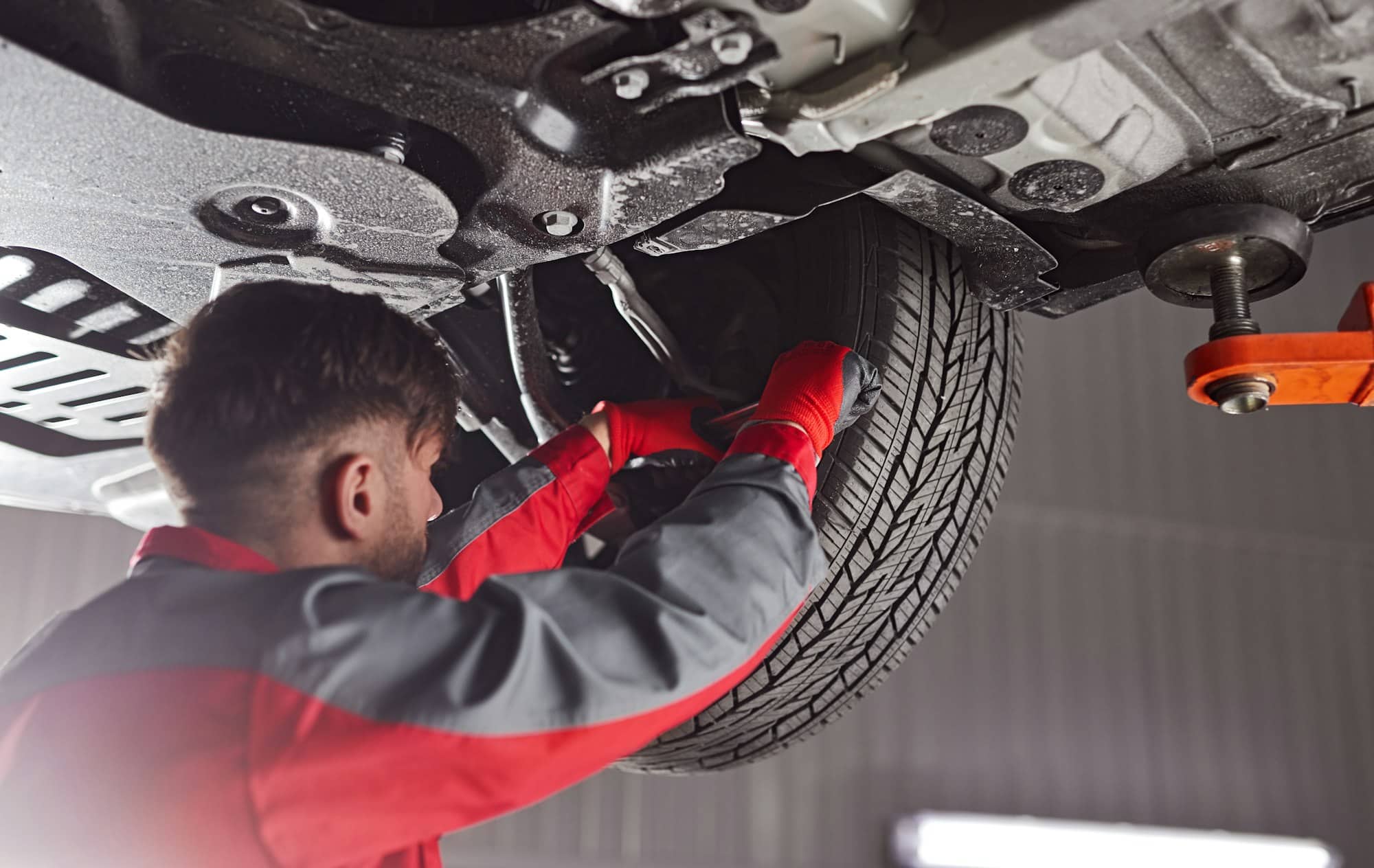How to Choose the Correct Anti-Roll Bar Diameter for Your Car’s Suspension Tuning?

Anti-roll bars, also known as sway bars, are critical components of a car’s suspension system. They play an essential role in controlling body roll and improving the car’s handling characteristics, particularly during high-speed turns or maneuvering on challenging surfaces. An incorrect diameter of your sway bar can lead to compromised handling, reduced performance, or even physical damage to your vehicle.
Understanding how to choose the correct anti-roll bar diameter for your car’s suspension tuning, thus, becomes integral for car owners, racers, and enthusiasts. This article will guide you on the factors to consider and steps to follow, to make an informed choice.
Also read : How to Implement a Performance Cold Air Intake System on a BMW 335i for Better Breathing?
Understanding the Functionality of Anti-Roll Bars
Before diving into the selection process, it’s important to have a clear understanding of the role of anti-roll bars in a car’s suspension system.
Anti-roll bars are torsion springs that connect a car’s right and left wheels through their suspension systems. They are installed to improve the car’s stability and prevent excess body roll during cornering. When a car takes a corner, the weight shifts towards the outer wheels, causing the car to lean in the direction of the turn. This leaning, known as body roll, can affect the car’s balance and handling. Anti-roll bars counter this by applying force to lift the inside wheel and push down the outside one, thereby reducing body roll and improving stability.
In the same genre : What’s the Best Way to Protect Your Car’s Engine from Heat Soak in Traffic?
In simple terms, a stiffer anti-roll bar reduces body roll more than a softer one. However, the choice of stiffness or diameter isn’t as straightforward and depends on various factors like the car’s weight, track conditions, and desired handling characteristics.
Factors to Consider for Selecting Anti-Roll Bar Diameter
When choosing the diameter of your anti-roll bar, you need to consider a range of factors. The first among these is the weight of your car.
The weight of your car plays a crucial role in determining the necessary stiffness of the anti-roll bar. To put it simply, heavier cars need stiffer bars and vice versa. However, it’s not just the total weight, but also the weight distribution in your car that matters. Cars with more weight at the front need stiffer front bar while those with more weight at the rear will require a stiffer rear bar.
The second factor to consider is the type of springs in your car’s suspension system. If your car has softer springs, a stiffer anti-roll bar may be needed to compensate, and vice versa. The choice of anti-roll bar diameter should be complementary to your car’s spring rate to ensure balanced handling.
Lastly, consider the intended use of your car. A car that’s primarily driven on a smooth, straight highway will require a different anti-roll bar setup than a car that’s frequently used on a curvy race track.
Determining the Correct Diameter for Front and Rear Anti-Roll Bars
The diameters of front and rear anti-roll bars need to be decided separately, considering the car’s weight distribution and handling characteristics.
For front anti-roll bars, a larger diameter or stiffer bar will reduce body roll and promote understeer, where the car tends to go straight instead of turning. This can be beneficial in heavy front-wheel-drive cars, where there’s a lot of weight at the front.
Conversely, for rear anti-roll bars, a larger diameter or stiffer bar will reduce body roll and promote oversteer, where the car tends to turn more than desired. This can be useful in rear-wheel-drive cars with more weight at the back, promoting better turn-in response.
As a general rule, the diameter of your anti-roll bar should increase with the weight of your car, the stiffness of your springs, and the level of body roll you’re willing to tolerate.
Testing and Adjusting Your Anti-Roll Bar Setup
Once you’ve made an initial choice of anti-roll bar diameters based on the above factors, testing and adjustment become key. This will involve driving your car under different conditions and making necessary adjustments.
The goal is to achieve a balanced handling characteristic where your car responds predictably under all driving conditions. Too much understeer or oversteer can be as bad as too much body roll, so fine-tuning is often required.
One way to test is by driving your car on a track or a familiar road and noting its handling characteristics. If it’s showing too much body roll or if it’s handling is too understeer or oversteer, you may need to adjust your anti-roll bar setup.
In conclusion, choosing the correct anti-roll bar diameter for your car’s suspension tuning involves understanding the role of anti-roll bars, considering factors like car’s weight, spring stiffness, and desired handling characteristics, and making necessary adjustments based on testing. By taking these steps, you can significantly improve your car’s handling and performance.
The Impact of Anti-Roll Bars on Race Cars
Race car drivers and enthusiasts understand well how the right anti-roll bar can greatly influence the performance of their car. A race car, designed for high-speed turns and intense driving conditions, will need a more specific anti-roll bar setup.
In race cars, the weight transfer from side to side is far more dramatic due to the high-speed cornering. This necessitates a stiffer anti-roll or sway bar to combat excessive body roll and maintain optimum stability. The type of track the race car is driven on also matters. For instance, a track with numerous sharp turns and bends may require a stiffer set-up to manage weight transfer effectively.
The spring rates in race cars also tend to be stiffer due to the demand for maximum tire contact with the surface for enhanced grip and control. Depending on the spring rate of your suspension, you might need a stiffer or softer anti-roll bar. If your race car already has very stiff springs, a softer roll bar might be more appropriate to prevent the car from becoming too rigid, which can lead to oversteer and instability.
The right anti-roll bar diameter for front and rear can also differ in race cars due to their specific weight distributions. Race cars often have more weight at the back due to the engine placement, making a stiffer rear bar essential.
Lower Control Arms and Anti-Roll Bar Diameter
The connection between the anti-roll bar and the lower control arms of your car’s suspension is a crucial aspect to consider when choosing an anti-roll bar diameter. This is because the lower control arms are what transmit the torsion from the anti-roll bars to the suspension and thus, to the body of the car.
In simpler terms, the lower control arm is what allows the sway bar to work. When your car makes a turn and the body leans, the anti-roll bar twists. This twisting motion is transferred to the suspension via the lower control arms, which then react by exerting an opposing force, reducing the amount of body roll.
The type of lower control arms and their design can affect how well the anti-roll bar can do its job. If the control arms are too weak or improperly designed, they might not be able to effectively transmit the torsion from the roll bar to the suspension, leading to reduced roll stiffness and compromised handling.
Therefore, when choosing an anti-roll bar diameter, it’s essential to also consider the design and strength of your lower control arms. If you plan to use a stiffer anti-roll bar, make sure your lower control arms are strong enough to handle the increased torsion.
Conclusion: Perfecting Your Suspension Tuning
In the end, perfecting your suspension tuning with the correct anti-roll bar diameter is all about achieving a balance. This balance is based on your car’s weight, spring rates, lower control arms, and the desired handling characteristics.
Remember, the stiffer the roll bar, the more roll stiffness it provides, which in turn reduces body roll. However, this doesn’t mean that a stiffer roll bar is always better. Too much stiffness can lead to poor handling characteristics like oversteer and understeer.
Your goal should be to find that sweet spot where your car handles predictably under all conditions, be it a highway cruise or a high-speed track race. This involves understanding the role of anti-roll bars, selecting the right diameter based on your car’s specs, and making necessary adjustments based on real-world testing.
By taking this informed approach to selecting your anti-roll bar diameter, you can enhance your car’s performance and enjoy a smoother, more stabilized ride. After all, a well-tuned suspension is fundamental to a great driving experience, whether on the race track or the open road.
